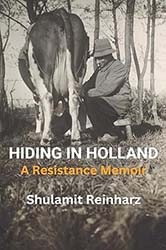The grandchildren of Gerrit and Cor den Hartog have told the story of their grandparents, who lived under Nazi rule in the occupied Netherlands. Using both primary and secondary sources, including Dutch archives, Kristen den Hartog and Tracey Kasaboski have recreated what it was like for a simple market gardener and his wife to confront the occupation. The sisters have also provided the reader with an account of how Queen Wilhelmina and the royal family, living in exile following the Nazi occupation, used Radio Ornaje to rally the Dutch population against their occupiers.
With Hitler’s appointment of Arthur Seyss-Inquart as his Reich commissioner in the Netherlands, he had hoped to bring the Dutch around to Nazi ideals. Unlike the Poles, the Nazis viewed the Dutch as sharing Germanic blood and thus receptive to Nazi racial theory. On the eve of the German invasion of the Netherlands, there did exist a small pro-Nazi political party, but most of the Dutch population was unsympathetic to Hitler and, following the occupation, unresponsive to Nazi anti-Semitism. In fact, as the authors inform us, many of the Dutch churches spoke out against the Nazi treatment of Dutch Jewry. Nevertheless, the Nazi regime was able to round up the country’s Jewish population and confine them to the Westerbork transit camp. The authors detail the manner in which Jewish deportees from Westerbork set out on foot along the central road, the Boulevard des Misères, with their meager belongings and were force – marched to Hooghalen, where they boarded a train to Auschwitz, having no idea of their fate.
Gerrit and Cor den Hartog were among the many Dutch citizens who tried to help Jews, but the reality was that despite the sympathy of most Dutchmen, of the 107,000 Jews deported from the Netherlands to camps like Auschwitz, only 5,000 returned. Excluding Poland, the percentage of Jews murdered was far greater than in any other country, an uncomfortable truth that the authors remind us, “would haunt the country for decades to come.”





